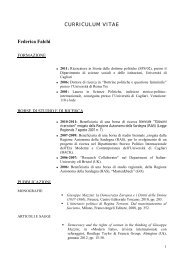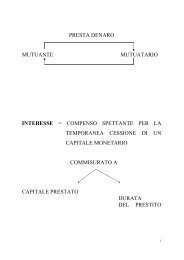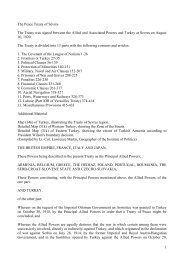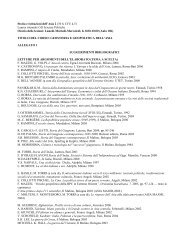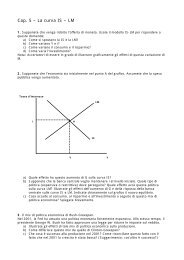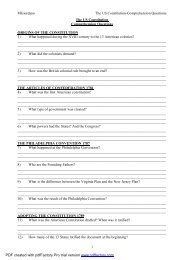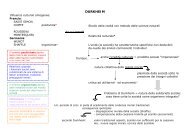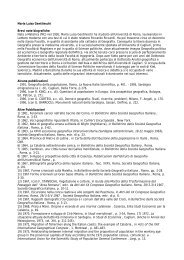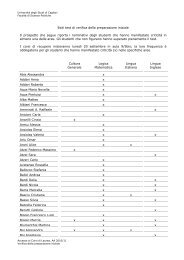Controlling for Heterogeneity in Gravity Models of Trade
Controlling for Heterogeneity in Gravity Models of Trade
Controlling for Heterogeneity in Gravity Models of Trade
Create successful ePaper yourself
Turn your PDF publications into a flip-book with our unique Google optimized e-Paper software.
that it may be different <strong>for</strong> each direction <strong>of</strong> trade (i.e.αij≠ αji). However, we reta<strong>in</strong> theassumptions <strong>of</strong> the PCS model that the slope coefficients are constant over time and acrosstrad<strong>in</strong>g pairs. Our specification <strong>of</strong> the augmented gravity model with fixed effects (FEa) is:whereln Xijt= αij+ αt+ β1 lnYit+ β2lnYjt+ β3ln Nit+ β4ln Njt+ εijt;(5)α ij is the specific “country-pair” effect between the trad<strong>in</strong>g partners. The basic version(FEb) is the same as this, except <strong>for</strong> the constra<strong>in</strong>t that β = β 0 . The country-pair <strong>in</strong>tercepts3 4 =<strong>in</strong>clude the effects <strong>of</strong> all omitted variables that are cross-sectionally specific but rema<strong>in</strong> constantover time, such as distance, contiguity, language, culture, etc. Us<strong>in</strong>g the pooled data describedabove, we have 422 country-pair <strong>in</strong>tercepts.Because there is a long-stand<strong>in</strong>g problem with determ<strong>in</strong><strong>in</strong>g the appropriate measure <strong>of</strong>economic distance so as to capture transportation and <strong>in</strong><strong>for</strong>mation costs, an added benefit <strong>of</strong> thefixed effects model is that it elim<strong>in</strong>ates the need to <strong>in</strong>clude distance <strong>in</strong> the regression. The mostcommon method <strong>for</strong> handl<strong>in</strong>g distance is to do as we have above and simply measure it betweenthe economic centers (assumed to be the capital cities) <strong>of</strong> the two countries. There are obviousproblems with this, such as the implicit assumptions that overland transport costs are the same asthose over sea, and that all overland/oversea distances are equally costly. To provide just oneobvious example, Los Angeles is about 1300 kms further from Tokyo than is Moscow, but it isdifficult to believe that the economic distance between Tokyo and Los Angeles is not muchlower than that between Tokyo and Moscow. Our fixed-effects approach elim<strong>in</strong>ates the need to<strong>in</strong>clude a distance variable, as it controls <strong>for</strong> all variables that do not change over time.13



